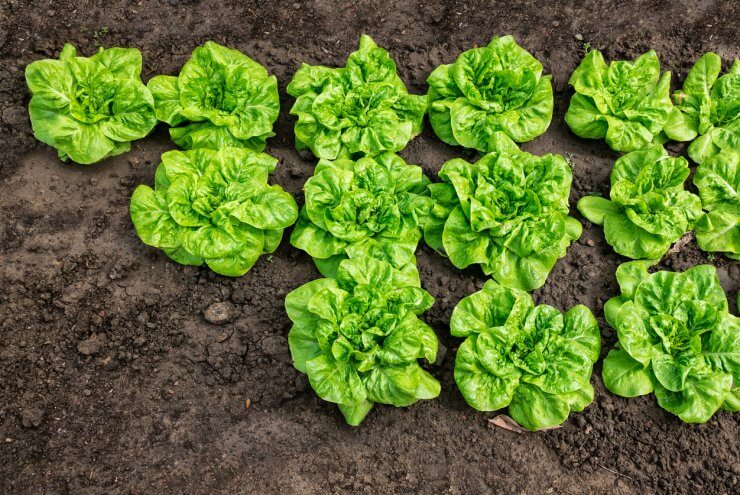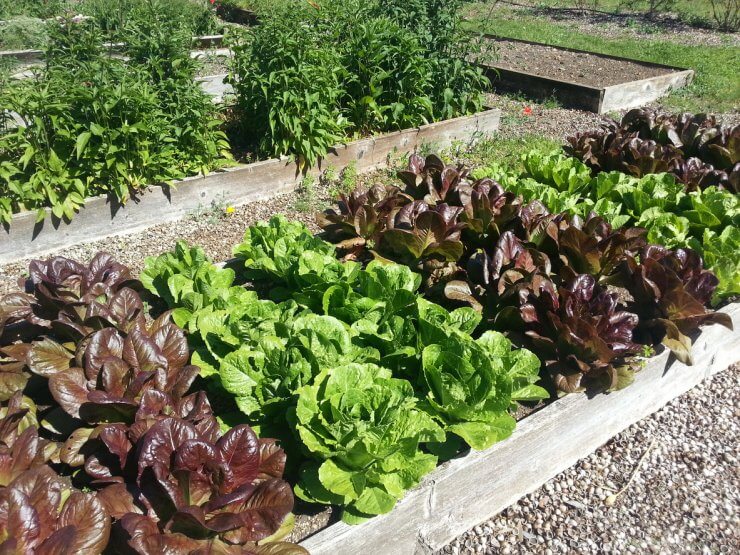
Lettuce growing in open ground
Lettuce loves sunshine and some partial shade when it’s hot. Lettuce likes well-draining soil that won’t leave its roots soggy. The soil should also be cool, loose, and at a pH between 6.0 and 7.0; for many varieties, you’ll see a narrower requirement of 6.2 to 6.8. Check the variety you plan to plant, and be sure to get your soil tested. Those digital sensors are OK in a pinch, but it’s really better to dig up some sample soil and send it off to your regional extension center for testing.
Lettuce is considered a cool-weather crop. While some varieties are heat-resistant, lettuce really prefers temperature around 60 to 65 degrees F. If you live in an area with hot summers, grow lettuce in the spring and fall.
If you live beyond the ideal outdoor growing USDA Plant Hardiness Zone for lettuce (zones 4 to 9), you can grow your lettuce in a container, greenhouse, or indoors. If you’re feeling adventurous, you could even try hydroponic gardening. There are kits available, complete with grow lights, that you can use to grow your lettuce. But some of the systems can be pretty pricey. Consider how much you want to invest in growing lettuce for salads and sandwiches.
Depending on your zone, you could grow lettuce year-round—or almost year-round—with the right equipment. A greenhouse gives you the most options. Row covers can protect your plants from both frost and harsh sunlight.
Raised beds and open ground

Lettuce growing in raised bed
A raised garden bed or planter is an excellent option for growing lettuce if you don’t have soil that’s ideal for lettuce plants (heavy clay soil, for example). Raised beds also help with drainage, which is essential for healthy lettuce. You can even buy raised beds or build one yourself to fit your space.
Watering and weeding will be easier if you have your lettuce in a raised bed or planter. It’s a good alternative to growing in open land. And if you fill a raised bed with packaged garden soil, you’re providing a cleaner and healthier environment for your lettuce from the outset.
Packaged garden soil means less weeding than you’d have from digging a hole in the ground; and with a raised bed or container, there’s less bending down to do your weeding!
If you plant your lettuce in a container, make sure your container has good drainage. Soggy soil is an invitation to infection. And keep in mind that lettuce has shallow roots, and they won’t do well if they’re soggy.
Lettuce is a gardener-friendly plant that keeps on giving, and it will grow well in open ground—as long as it has plenty of sunshine, good drainage, shade from intense heat, and the right pH (6.0 to 7.0). And if you’re growing looseleaf lettuce, you have the option of growing in a more artistic way, by broadcasting the seeds to create a lettuce patch. Try that if you decide to grow a few different varieties. You’ll get a great splash of color in your garden area!
How do you grow your lettuce—in open land, in raised beds, or in containers? Why do you prefer your method? Please tell us your tips and tricks for growing great lettuce!


 Previous
Previous

